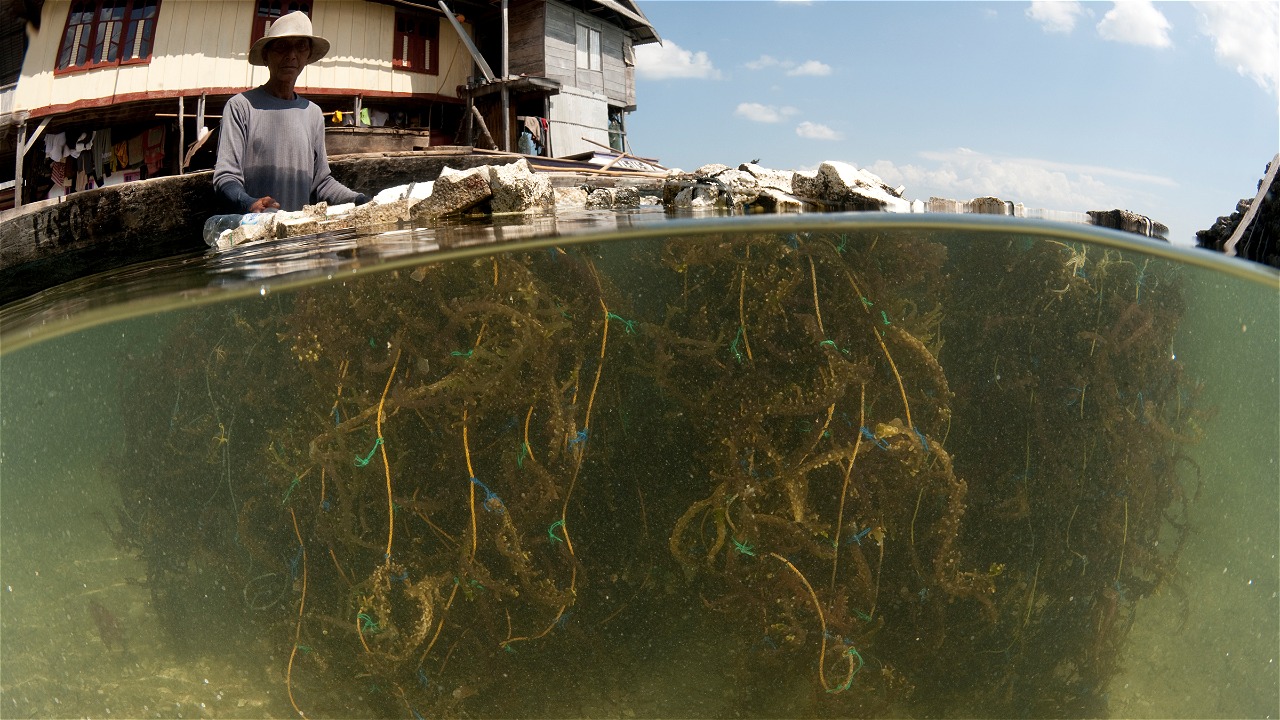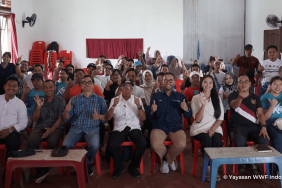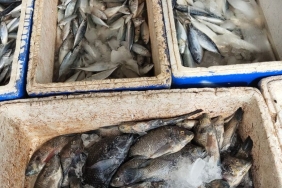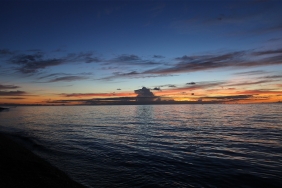BMP SEAWEED CULTIVATION MOTIVATOR TRAINING FORLA-ALOR
By Nur Ahyani
"Together We Can."
That is the motto that has become the glue between the board, motivators, and members of FoRLa-Alor for 7 years of this organization. On November 5-6, 2014, six motivators gathered in a building owned by the local government of Alor. Located on Hasanudin Street, Binongko Village, Teluk Mutiara Subdistrict, Alor Regency - NTT, this building has been used as the FoRLa Office, or familiarly called the FoRLa House, since 2007.
The six motivators are Nikanor Bana from Alaang Village; Muhamad S. Leky from Kayang Village; Yesmias Pantele from Pante Deere Village; Syarifudin Jou from Lapang Island; Darsono Saly from Bana Village; and Selfianus B. Sirah from West Kalondama Village. They gathered with the same purpose; to attend the Better Management Practices (BMP) Training on Kotoni, Sacol, and Spinosum Seaweed Cultivation by WWF-Indonesia and FoRLa-Alor Secretary, Helmy Janne Maro.
On the first day of the training, Miss Emy, the Secretary's nickname, collaborated with FoRLa Chairperson, Pelipus Laka, commonly called Mr. Ipu, to re-socialize WWF-Indonesia's cooperation program with FoRLa. A collaboration for institutional strengthening and improved seaweed farming practices. Both outlined the work program for the next 10 months, including the roles and responsibilities of motivators.
Following the description of the work program, Miss Emy outlined the contents of the BMPs used as the basis for implementing improvements in seaweed farming. The explanation ended with a discussion of whether the program could be implemented in the assisted villages, and possible obstacles to BMP assistance.
Bana Village with nine groups of farmers, as also confirmed by Mr. Nika, is ready to implement the program. In order for the program to run smoothly, he requested that the training for BMP be accompanied not only by motivators, but also from WWF-ID as the management, or experts.
In contrast to Bana Village, Mr. Selfi explained that BMP implementation in Mobobaa Village is not possible to be applied to groups, because the group culture does not exist in Mobobaa Village. The BMP implementation approach is more suitable if applied to individual farmers. Mr. Selfi has a trick to make BMPs easily accepted by the community. The trick is to socialize BMPs and hold training during breaks at the cultivation site.
Meanwhile, Mobobaa Village is constrained by the number of ships from Makassar that buy seaweed without considering quality standards. These buyers also play price games. Not only Mobobaa Village, Kayang Village, Lapang Island and Bana Village are also experiencing the same problem.
The first day of the meeting was closed by briefing the motivators with the BMP Book. The motivators were given the opportunity to study the BMP before it was explained in detail by WWF-Indonesia representatives the next day.
On Thursday, November 6, 2014, the BMP training agenda which was planned to start at 08.00 WITA, was forced to be delayed by two hours due to a power outage. Despite the delay, every chapter of the BMP was covered in detail. As usual, discussions and question and answer sessions were held after the discussion session.
Motivators in the field not only acted as extension workers but also as seaweed farming business owners. The things they asked about were not only group strengthening issues, but also technical cultivation issues.
It was not enough to discuss BMPs, the agenda continued with the first action schedule, which was the socialization of BMPs to cultivators in their respective locations. The motivators also arranged what was needed in the socialization, including socialization media such as banners to help them explain to the farmers.The spirit of collaboration to improve the quality of seaweed in Alor was evident from the shouting of the slogan "Together We Can" at the end of the event, closing the two-day BMP training.





